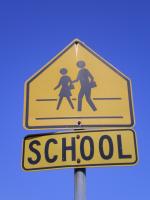Here are some tips from the National Highway and Traffic Safety Administration for side-view mirror adjustment to assist you in the elimination of blind spots. The best way to adjust your side mirrors is to move the glass outwards so your field of view is of other cars and blind spots are eliminated.
These steps can help prevent accidents and help keep YOU safe whether you are driving a fleet vehicle, or your own personal vehicles:
1. Set your rear view mirror as you normally would.
2. Lean your head over all the way to the left so it touches the driver’s window. From there, set your left side-view mirror so you can see the back corner of your car.
3. Lean over the same distance the other way, (your console or gear selector is a good reference point) and set your right side-view mirror the same way.
When you return your head to your normal driving position, you should not be able to see the back corner of your vehicle in either side view mirror.
To see if you’ve adjusted correctly for your vehicle’s blind spot, test it out in a parking lot or other location where you can safely and slowly pull up to a car. You should now always be able to see the car; it should move from your rear view mirror to your driver’s side or passenger’s side mirror with no break until you can spot it with your peripheral vision.

